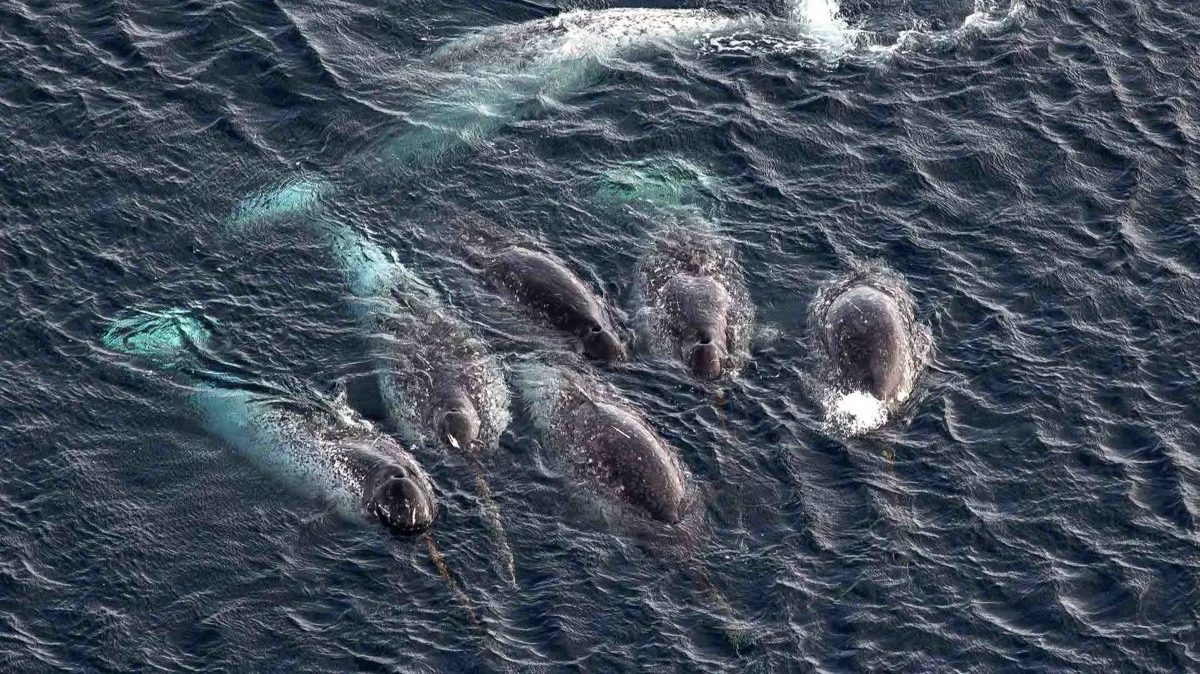#ARCTIC. #SIBERIA. THIS IS TAIMYR. Over the past 50 years, the oceans have become much noisier due to ship engines, exploration and mining, military sonars, blasting in the construction of oil and wind farms. Moreover, the low-frequency noise has significantly increased – the range that many marine mammals use during hunting, for exchanging information, during mating, and so on.
The GoArctic portal has published a translation of the story of Columbia University professor Margaret Holloway about sea unicorns – narwhals (mammals from the whale family), which was published by The New Yorker.

In Fönfjord, a canal in East Greenland, local hunters caught two narwhals and towed them into shallow waters. The researchers equipped each animal with a heart rate monitor, satellite transmitter, and an Acousonde eavesdropping device. By the scar, the team recognized one of the narwhals – Nemo, a young male who was first caught back in 2014. After installing the instruments, Nemo was set free.
For several hours he did not make a sound. Then he dived 600 meters for squid, halibut, cod and capelin. By ‘clicking’ and ‘buzzing’ Nemo indicated that he was hunting. The next day, the researchers on the ship began to make noise on purpose – with an engine, locators, a seismic air gun.
Nemo stopped buzzing. He swam to the surface, where he could breathe as often as he wanted. And rushed away. For about 24 hours after hearing the ship and the airgun firing, Nemo did not produce any sounds and, most importantly, did not hunt or eat. The animal was under stress.
In addition, the Arctic, which is becoming ‘noisy’, makes it difficult for sea animals to communicate over long distances to hear each other.
In the summer of 2019, there were almost no narwhals. Those caught were mostly recaptured. Nemo was not among them. A high recapture rate indicates a small population. The team was also alarmed by the fact that all but one of the caught narwhals were males. This means that the number of females is decreasing, and those who were seen did not bear offspring.
In August 2020, the researchers returned to the site. They didn’t mark a single narwhal. Scientists published a letter in the journal Science that due to overfishing and climate change, East Greenland narwhals were under threat of local extinction. With the disappearance of the ice and cold of the Arctic, narwhals can become what many of them already imagine: fabulous, mysterious creatures that once lived on one end of the Earth – mythical underwater unicorns.
Previously, scientists collected valuable information about sea unicorns in the area of Franz Josef Land. Also we told that due to climate change, the last refuge of polar bears began to melt.
Follow us on Telegram, Instagram and Facebook.
Text: Angelica Stepanova, Photo: gazprom-neft.ru



